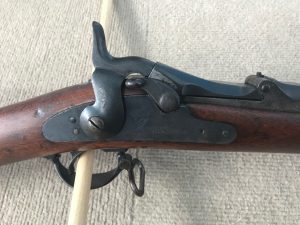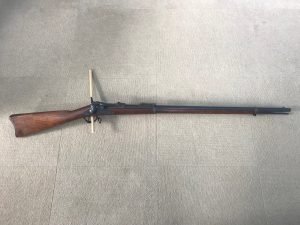
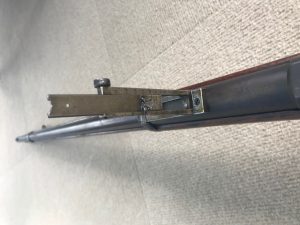
During the summer months, visitors to Fort Mackinac are able to see a real piece of history in action every single day. Historical interpreters representing soldiers from the 23rd Regiment of Infantry perform rifle firing and drill demonstrations throughout the day. The weapons they carry, the .45-70 Springfield rifle, are all 19th century originals, making them at least 130 years old. Let’s take a closer look at one of these fascinating weapons.
Introduced in 1873, the .45-70 remained the standard issue arm of the American army for 20 years. A single-shot weapon, the rifle derived its name from the cartridge it fired: a .45 caliber bullet propelled by 70 grains of black powder. Over the course of its service life, the army refined the rifle several times, making almost yearly changes to the design to reflect the realities of daily use and at the suggestion of officers and enlisted men. Only rarely did these design changes cumulatively result in the designation of a new model, but in 1884 the army approved a “new” design incorporating improved features.
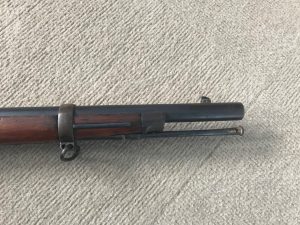
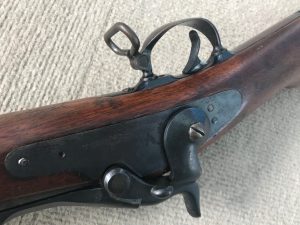
This Model 1884 displays many of these design elements. The two most prominent “new” features are the sight and the cleaning rod. The sight, designed by Lt. Col. A.R. Buffington of the Ordnance Department, includes a leaf that can be flipped up and adjusted to sight the weapon at ranges up to 1,400 yards. It also includes an adjustment screw to compensate for windage- by turning it, the entire vertical leaf swivels right or left. The cleaning rod, meanwhile, incorporates the flared button head adopted in 1879 and put into widespread production in 1882. The breechblock is stamped U.S. MODEL 1884, although in reality these stamps were not added to new rifles until 1886, and weapons marked this way did not enter widespread service until 1887. The rest of the rifle incorporates several other design improvements adopted over the years, such as knurling on the trigger and hammer, which was intended to improve a soldier’s fingertip grip on these critical pieces.
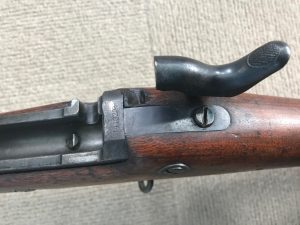
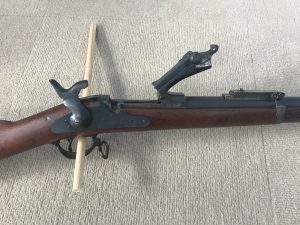
This particular rifle has a serial number in the 141000 range, indicating that it was probably originally produced in 1879 or 1880. How, then, can it incorporate features only authorized in 1884, and not actually put into service for a few more years? The small five-pointed star or flower next to the serial number most likely indicates that this weapon is an arsenal rebuilt. In 1879 the Springfield Armory began collecting older .45-70 rifles and using some of the parts to build new weapons, which were held in reserve or eventually issued to various state units (the forerunners to the National Guard). Furthermore, since the rifles were built using entirely interchangeable parts, after the weapons left frontline military service and entered the civilian market (which many did- they are still relatively easy for collectors to obtain) it was simple for gun brokers and owners to cobble together “new” weapons with a mixture of parts from different model years.
In any case, this rifle, and the others in daily use at Fort Mackinac, are truly history that you can see, smell, hear, and touch. Our interpreters carry rifles of both the 1873 and 1884 models, with many of the small variations added each year. We even have a few rifles equipped with ramrod bayonets, an experimental design attempted on three different occasions in the 1880s. These weapons had a small, sharpened metal dowel mounted under the barrel in lieu of a cleaning rod in an effort to eliminate the need for soldiers to carry a separate bayonet and scabbard. Historically, one of the two companies of the 23rd Infantry stationed at Fort Mackinac from 1884 to 1890 were issued the experimental ramrod bayonet rifles for evaluation. When you visit us at Fort Mackinac, be sure to ask the interpreters about their rifles- they’re a fascinating link to the past!






